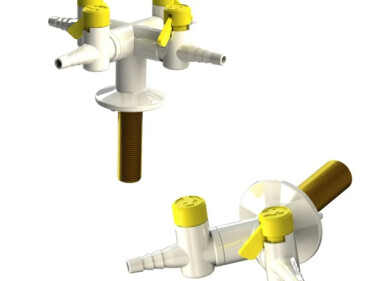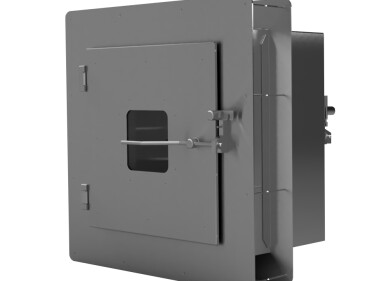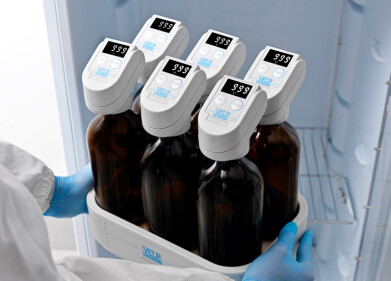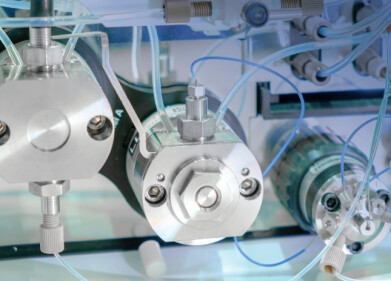Laboratory products
Containers with hydrophobic coating
May 02 2011
New drugs generate new challenges in the field of pharmaceutical packaging. “Biomolecules, for instance, are being used today in over 50% of all product developments in pharmaceutical therapy,” said Dr Claudia Dietrich, Product Manager Vials Coating at Schott. “Biotech components are very effective but also cost intensive and highly sensitive,” explained Dietrich. To preserve such products for a longer period of time, keeping their effectiveness stable and better protecting the highly effective and sensitive ingredients, pharmaceutical companies often use lyophilization.
The lyophilization process puts special demands on the packaging. At the Müllheim site in Germany, Schott produces special containers under the name Schott TopLyo™ with a hydrophobic coating. Coated on the inside surface and improved with geometric design, the containers offer optimum efficiency for the lyophilization process. Vials with these hydrophobic coatings have such homogeneous surfaces that lyophilized substances find it difficult to adhere to the inside walls of the vials.
“The result gives the lyophilization cake a better appearance and enables less disruption of dry material,“ said Dietrich. The coating is applied by the proprietary Schott PICVD technology – ‘Plasma Impulse Chemical Vapor Deposition’, in a validated and constantly inspected process. The entire layer is only 40 - 100 nanometers thick and therefore has no effect on the dimensions of the pharmaceutical container. It is stable to pharmaceutical processes such as washing, sterilisation and depyrogenization (heat treatment of 300°C).
The TopLyo vials have been designed with a special geometry to maximise strength and minimise breakage, and also to improve heat transfer during the lyophilization process. By cutting the processing time needed for freeze-drying, pharmaceutical companies save production costs.
The benefit for the customer is a lower rate of rejects caused by collapsed lyophilization cakes and a reduced risk of breakage. As both effects have an impact on processing costs, there is a financial advantage to use this product.
To increase patient safety for pharmaceutical and diagnostic products, Schott has developed an innovative laser-coding technology for the individual marking of pharmaceutical glass containers together with a team of experts from the pharmaceutical industry, glass tubing production, as well as software and vision inspection. This innovation can help pharmaceutical companies to develop a reliable Track Trace system from production to end customer and further reduce the risk of mix-up of vials and batches.
Digital Edition
Lab Asia Dec 2025
December 2025
Chromatography Articles- Cutting-edge sample preparation tools help laboratories to stay ahead of the curveMass Spectrometry & Spectroscopy Articles- Unlocking the complexity of metabolomics: Pushi...
View all digital editions
Events
Jan 21 2026 Tokyo, Japan
Jan 28 2026 Tokyo, Japan
Jan 29 2026 New Delhi, India
Feb 07 2026 Boston, MA, USA
Asia Pharma Expo/Asia Lab Expo
Feb 12 2026 Dhaka, Bangladesh



















